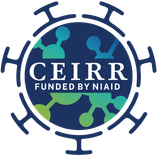Networks
NIAID influenza networks are programs that work to advance the objectives of the Universal Influenza Vaccine Strategic Plan. The networks are independent yet collaborative in their work to further scientific discovery related to the three research areas. The content below is solely the responsibility of the authors and does not necessarily represent the official views of the National Institutes of Health.
Found 9 items.

The Biovisualization Program in the Bioinformatics and Computational Biosciences Branch in the Office of Cyber Infrastructure and Computational Biology at NIAID is creating 2D and 3D augmented reality models of Influenza to help design a Universal Vaccine.
Research Areas
Vaccine Innovation & Development
Research Types

BV-BRC has combined the bacterial (PATRIC) and viral (IRD/ViPR) BRCs into a single resource center. BV-BRC provides tools for comparative bioinformatics, large-scale data analysis, multi-scale systems biology exploration, integrative data mining and discovery, and machine learning. Data available for influenza research includes clinical studies, drug targets and resistance, epidemiology, protein structure and function, and over a million viral genomes.
Research Areas
Emergence & Transmission
Immunity & Protection
Vaccine Innovation & Development
Research Types

CEIRR studies the natural history, transmission, and pathogenesis of influenza viruses and provides an international research infrastructure to address influenza outbreaks. The CEIRR Network includes six research centers and one data processing and communication center that work to elucidate how influenza viruses infect, evolve, and transmit in both human and animal infections.
Research Areas
Emergence & Transmission
Immunity & Protection
Vaccine Innovation & Development
Research Types

CIVICs advances influenza vaccine science through innovative research, vaccine development, and clinical trials. The CIVICs Network includes three vaccine research centers, two clinical cores, one manufacturing and toxicology core, and one data management and coordination center that work to develop influenza vaccines that provide robust, durable, and broad protection against seasonal and pandemic influenza.
Research Areas
Immunity & Protection
Vaccine Innovation & Development
Research Types

HIPC facilitates investigations of human immunity and develops novel applications addressing human disease. HIPC consists of nine research centers across the United States that work to provide a comprehensive understanding of the human immune system and its regulation. Findings inform evaluation of the safety and effectiveness of vaccines.
Research Areas
Immunity & Protection
Research Types

IDCRC works in partnership with the VTUEs as a coordinated national and international network of scientific experts. This network’s focus is the development and testing of vaccine candidates and therapeutics for infectious diseases. A key function of IDCRC is the inclusion of special and underserved populations into research across the human lifespan.
Research Areas
Vaccine Innovation & Development
Research Types

The NIAID Modeling Immunity for Biodefense (MIB) program develops and applies computational models of immunity to advance our understanding of the complex immune mechanisms leading to protection during vaccination and/or infection events.
Research Areas
Immunity & Protection
Research Types

The Vaccine Adjuvant Research Programs aim to establish novel adjuvants that can be used to target both infectious diseases and immune-mediated diseases for preclinical vaccine development. Areas of Adjuvant Research include: Adjuvant Discovery and Mechanistic Research, Adjuvant Comparison, Adjuvant Development, and Clinical Evaluation.
Research Areas
Immunity & Protection
Vaccine Innovation & Development
Research Types

VTEUs conduct Phase 1 through Phase 4 clinical trials of vaccines and treatments for infectious diseases. Research priorities include testing novel vaccines, developing combination vaccines, and testing novel drug delivery systems. Utilizing a network of ten international sites, vaccine candidates can be tested rapidly to counteract emerging public health concerns.
Research Areas
Vaccine Innovation & Development
Research Types
